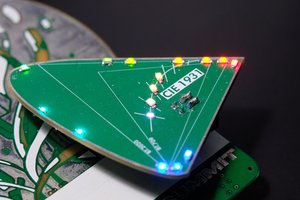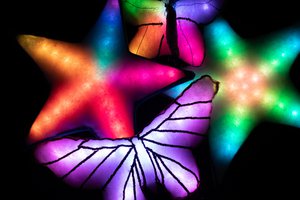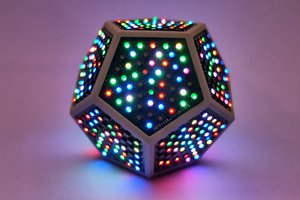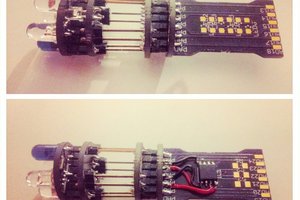Monome is great. But I sometimes regret that it cannot be used as a single, "real" music instrument.
Trellis from Adafruit can be used to build one. With Arduinome it can be handled like a monome would be, and run alongside of a computer running Max or PureData.
You can also use an Arduino Leonardo board, and make it appear like a MIDI device.
Last, you can also generate sounds directly on the board using wave tables, pwm and a low-pass filter. The synth is really good at that. You can even extend the number of channels to 8.
But to me Trellis has three drawbacks:
— You cannot use more than 8 boards together, because of the chip restricted addresses. That's sad because music uses 12 notes per octave, a 12x12 monome would be great... But that's 9 Board. And a 16x16 would be even nicer!
— You can reduce led intensity for a whole 4x4 panel, but not for one specific led.
— The pad triggers when pressed around 250g, which is a bit to much. A softer press would make it more playable.
So, with these goals I started designing something in the spirit of Trellis, which is compatible with their silicone pads.
SK6812 mini leds are used. They are the same as the adafruit NeoPixel, but in a 3,5x3,5mm form factor. With these leds independent dimming will be possible, so as color. These leds are daisy-chainable up to 1024, and they use only two pins for data, one for data in, the other for data out to the next one.
Arduino is used to drive the leds and the button. This is nice because it can be used as an I2C slave device, with any address we want. It also can be reprogrammed if needed.
I project to design a softer pad too, with trigger pressure around 100 - 150grams, but silicone molding is something I don't know yet, so for know it will use the original Trellis pad from Adafruit. And having one made for me would probably be quite expensive...
 Pierre-Loup M.
Pierre-Loup M.




 Reid Sox-Harris
Reid Sox-Harris
 Sander van de Bor
Sander van de Bor
 davedarko
davedarko
this looks perfect, i was modifying the boards myself to fit regular neopixel leds, but they were too big for the pads, and i didn't know there was smaller ones...